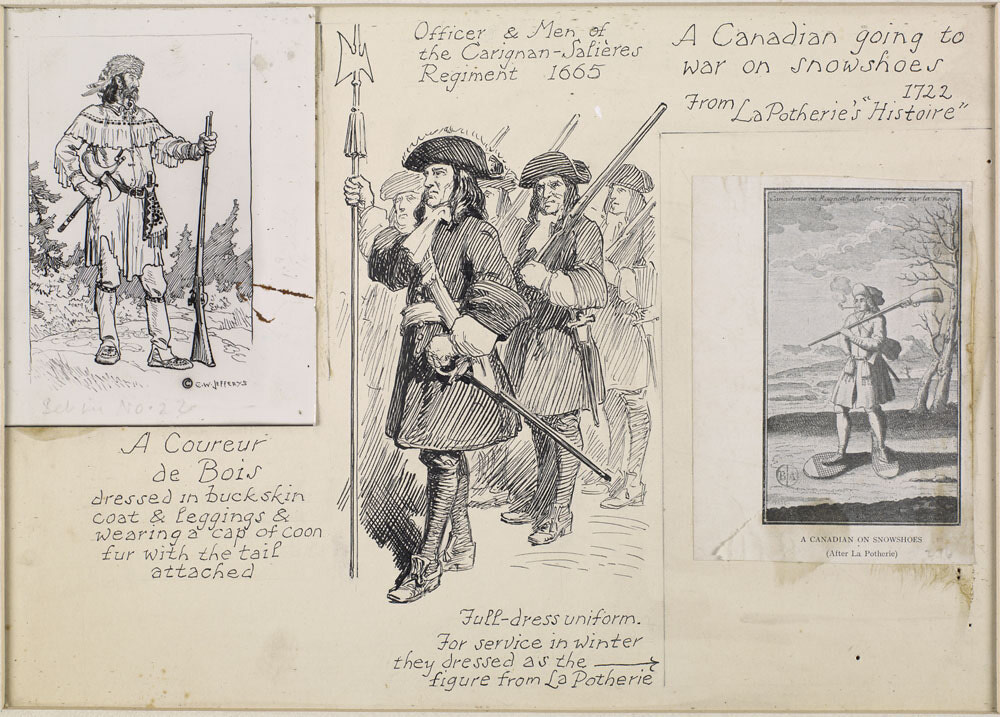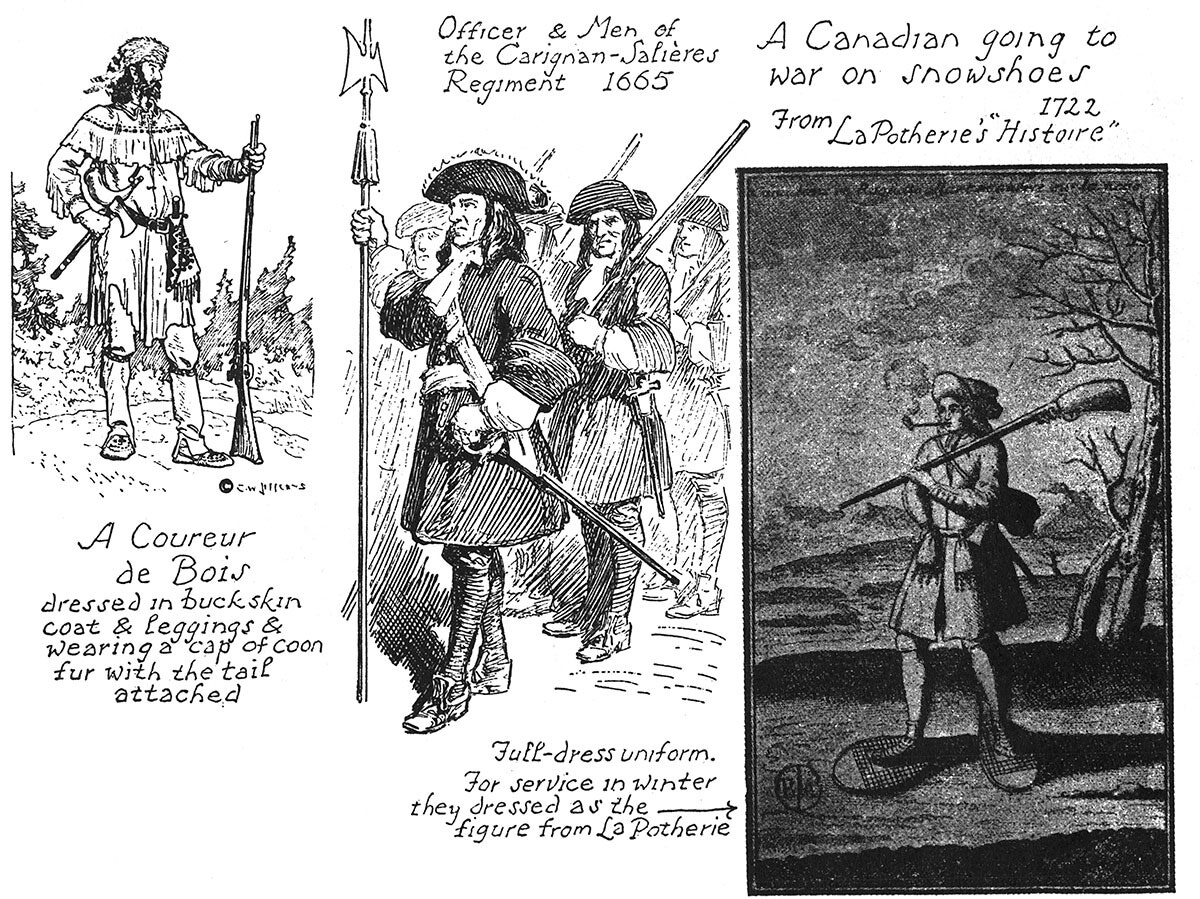
A Coureur de Bois/Officer and Men of the Carignan-Salieres Regiment/A Canadian Going to War.
Jefferys, Charles William, 1869-1951.Library and Archives Canada, Acc. No. 1972-26-301
1 drawing : pen and black ink over pencil, with opaque white; photograph and photomechanical print on cardboard
Support: 30.300 x 21.500 (sight)
Coureur De Bois. Men of the Carignan-Salieres Regiment
Library and Archives Canada, Acc. No. 1972-26-301
Remarks
C.W. Jefferys' notes about this picture from The Picture Gallery of Canadian History Volume 1
The regiment of Carignan was the first body of troops belonging to the French regular army sent to Canada. The arrival of these veterans, numbering from twelve to fifteen hundred, was an important addition to the strength of the colony, where never more than one hundred and fifty soldiers had ever been assembled before.
They arrived in the summer of 1665, after several years active service, their last campaign being in Hungary against the Turks. After marching on foot across Europe, they made the tedious Atlantic voyage in crowded, ill-provided, fever-infected ships, and on their arrival were sent as quickly as possible to build forts on the Richelieu River, the gateway through which the Iroquois invaded Canada. By the end of autumn four forts were built and garrisoned. Duty in a new frontier post was itself no easy task, but there was still more arduous work ahead of them.
Many of the Carignan veterans settled along the frontier in the neighbourhood of Montreal. Some became Indian traders or coureurs-de-bois, while others found employment in the towns. Several of their officers received grants of land and became seigneurs. Their names survive today in the names of such places as Sorel, Chambly, Lavaltrie, Vercheres, St. Ours, Contrecoeur, Varennes, and others.
The drawing shows the Carignan parade uniform: brown coat, grey stockings, white belt, black low-crowned hat with wide turned-up brim. In winter they no doubt wore fur caps, leggings and moccasins. The Canadian militia wore thick homespun or blanket coats, and woollen caps or tuques. Those from the Quebec district were clothed in red, those from Three Rivers in white, and those of Montreal in blue.
For detailed history of the Carignan regiment and its Canadian connections consult Le Regiment de Carignan, by Benjamin Suite, 1922, and the book bearing the same title, which completes Suite's work, by Regis Roy and G. Malchelosse 1925, both published by G. Ducharme, Montreal.
The "Runners of the Woods" or Coureurs-de-Bois greatly aided the French explorers in penetrating into the interior of the continent. They served as canoemen and were invaluable as scouts and explorers. They adopted many of the habits of life of the Indians. They wore moccasins and fur caps, leggings, and buckskin coats, cut into fringes at the shoulders and skirts and along the seams, and ornamented with beads and dyed porcupine quills. They smeared their faces with grease and paint, as did the Indians, as a protection against mosquitoes and black flies, while at times of festivity they donned gay coloured laced coats of French cloth, feathered hats, and silk scarves and sashes.
Published References
- Jefferys, Charles W. 1942 The Picture Gallery of Canadian History Volume 1, p.150




Comments